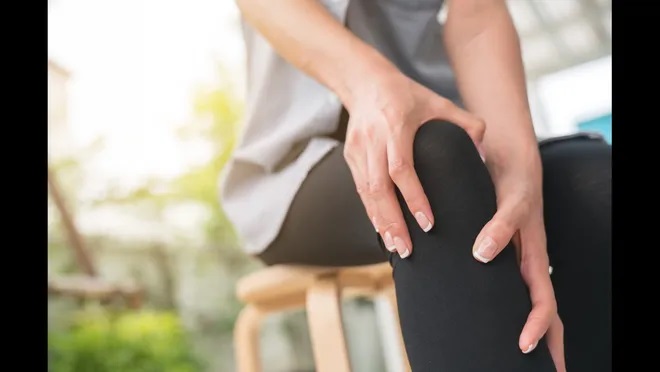
09, May 2023
Did you know May is National Arthritis Awareness Month?
This observation aims to bring attention to a condition affecting millions of Americans, leading to various forms of disability in the U.S.
It has an economic impact on medical expenses and lost wages. It’s the perfect opportunity to pause and learn more about Arthritis and the medical help available to those living with it.
Arthritis is a condition characterized by inflammation of the joints. Arthritis can cause joint pain, swelling, stiffness and a decreased range of motion. Its symptoms depend on the type of Arthritis and generally worsen with age.
There are various types of Arthritis, but two of the most common are osteoarthritis and rheumatoid arthritis. These types of arthritis damage the joints in different ways.
Osteoarthritis remains the most common type of arthritis.
It involves damage to your joint’s cartilage that worsens over time. The condition causes cartilage to decay and leaves the bones unprotected.
The bones may start rubbing against each other, causing pain and restricted movement.
An overgrowth of bone may also occur along with fluid building up within the joints from cartilage damage.
Joint pain, stiffness, tenderness, limited range of motion, Crepitus or crackling, grinding noise with movement, joint effusion (swelling), bony enlargements and osteophyte formation are typical findings in osteoarthritis.
Age, obesity, injury or overuse, heredity and muscle weakness make us more susceptible to osteoarthritis.
Pain relievers like non-prescription NSAIDs and physical therapy are usually recommended for osteoarthritis.
The next most common type of arthritis is rheumatoid arthritis, which affects the synovial membrane, a tough membrane that lines the joint.
The body’s immune system attacks the inflamed and swollen synovium, eventually destroying cartilage and bone within the joint.
Rheumatoid arthritis can often affect the joints in the hands, wrists, ankles, knees or shoulders, typically in a symmetrical pattern, and lead to severe joint damage and deformity if left untreated.
Additional symptoms may also develop in other body parts, such as the lungs, heart, skin and eyes. This type of arthritis does not have a cure, but remission of symptoms is more likely to happen when treatment begins early with medications known as disease-modifying anti-rheumatic drugs.
Other joint arthropathies include juvenile arthritis, psoriatic arthritis and gout.
Overall treatment options depend on the type of arthritis and aim to alleviate symptoms and improve joint function.
Many treatment options are available to alleviate symptoms, reduce pain and improve joint function.
Educating yourself on strategies for handling pain and allied symptoms, carrying out daily activities, reducing stress and improving mood is important.
Keeping physically active and regular exercise is essential for all, but it is more crucial for osteoarthritis patients.
Regular exercise helps with weight loss and reduces the pressure on weight-bearing joints.
Although exercise may be strenuous when your joints ache, keeping the joints moving can ease tight muscles and ligaments.
Choose easy activities on the joints, such as walking, bicycling, swimming or even yoga.
Low-impact arthritis-friendly physical exercises can reduce the risk of injury and not put too much stress on the joints.
Losing excess weight is particularly important for Arthritis patients to reduce stress on the weight-bearing joints.
Certain foods known to have potent anti-inflammatory effects are seafood rich in Omega-3 fatty acids and vitamin D, dark leafy greens, nuts; olive oil; berries; garlic and onions; green tea.
While there is no cure for arthritis, it can be managed and treated. A wide variety of interventions can help reduce pain, prevent or delay disability and improve overall quality of life.
Physical therapy is another helpful solution for arthritis patients.
Physical therapy promotes stronger muscles and ligaments and helps with body alignment and balance. Sometimes braces and orthotics help reduce stress on the joints.
Natural nutritional supplements like glucosamine and chondroitin, Omega-3 fatty acids, and curcumin may help relieve pain, stiffness and other arthritis symptoms.
More natural medicines are being researched in well-designed clinical trials that are currently underway.
In severe cases of osteoarthritis, joint replacement surgery may be needed if the condition is causing limitations in one’s ability to perform functions of daily living.
Typically, this is the most viable option for patients with chronic pain with little to no improvement for many years.
Are you or your loved ones suffering from arthritis? What are you doing to ease the pain and discomfort?
If you are experiencing joint pain, getting a proper diagnosis is crucial so you can initiate appropriate treatment and work on minimizing joint damage and symptoms and preventing the disease from worsening.
In most cases, early diagnosis can help prevent joint damage over the long term.
Also, remember to ask about alternatives to drugs, such as gels and patches that can help to alleviate symptoms.
Dr. Sue Mitra and her staff strive to offer their patients the best care, advice and services available in the medical field with the goal to keep patient healthy & happy.

Dr. Sue Mitra is board certified in international medicine. She is seen here with a Cologuard, which is a noninvasive colon cancer screening test. (Photo by: Tim Shortt/Florida Today)